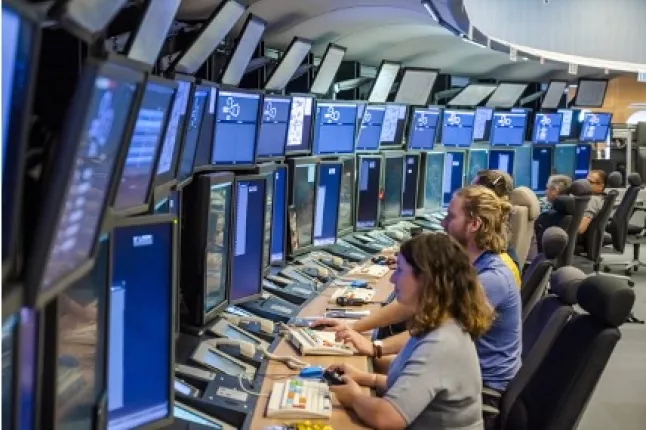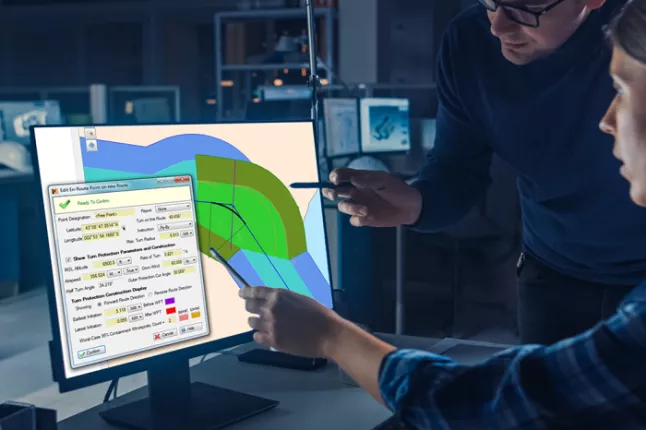Thales' contribution to SESAR JU
About SESAR Joint Undertaking
SESAR 1 was introduced in 2009, followed by SESAR 2020 (2016-2022), and now SESAR 3 (until 2031) represents the fresh European blueprint aimed at accelerating the achievement of an all-encompassing, resilient, and sustainable Digital European Sky through research and innovation.
Building on the work of the first SESAR Joint Undertaking, the SESAR 3 JU launched in December 2021, has 10-year mandate (2021-2031), corresponding to the duration of the Horizon Europe programme (2021-2027).
The SESAR program consists of several types of projects:
- Exploratory Research (ER): Research activities
- Industrial Research (IR): Focuses on research prior to industrialization. Most of the projects Thales participates in fall into this category.
- Digital Sky Demonstration (DSD): Projects with a high level of maturity, typically in the pre-deployment stage.
The SESAR 3 JU will address the following research lines (called Working Areas):
- Connected and automated ATM
- Air-ground integration and autonomy
- Capacity-on-demand and dynamic airspace
- U-space and urban air mobility
- Virtualisation and cyber-secure data sharing
- Multimodality and passenger experience
- Aviation green deal
- Artificial intelligence (AI) for aviation
- Civil/military interoperability and coordination
Thales in SESAR
“Being a member of SESAR Joint Undertaking allows Thales to contribute to building up the “Single European Sky”, to shape the future of Research and Innovation activities in Europe and ensure alignment between technical visions and investments. It serves as a platform for industry collaboration, enabling companies to collectively address common challenges in Air Traffic Management. Thales, committed to innovation, is poised to play a pivotal role in this transformation. Our vision is clear: to connect people and territories in a sustainable way by ensuring safe, secure and fair mobility for all airspace users. Thales actively engages in diverse research areas and domains, with a notable emphasis on projects within SESAR, furthering our dedication to shaping the future of aviation.”
Christian Rivierre, VP Airspace Mobility Solutions at Thales.
Discover some of our contributions to SESAR’s projects
CONCERTO
Aviation Green Deal
CONCERTO stands for dynamiC cOllaboratioN to generalize eCo-friEndly tRajecTOries. It aims to develop two solutions to help maximize the opportunities for reducing CO2 emissions, and to introduce the management of non-CO2 impacts into day-to-day operations:
Solution #1: an Orchestrator for Eco Friendly Operations
Solution #2: a Traffic Flow Optimizer based on Total Climate Impact The project aims to integrate green ATC capacity into the system, with the appropriate level of automation, and to help stakeholders balance regularity and environmental performance at local and network level.
CONCERTO brings together 23 partners.


ATC-TBO
Connected and automated ATM
Trajectory-Based Operations (TBO) project is dedicated to providing multiple solutions that facilitate trajectory-based operations throughout the planning and execution stages, adopting a comprehensive network perspective. These solutions focus on collaborative management of flight and traffic flow, utilizing data downlinked from aircraft (EPP), and enhancing both ATC and network procedures by synchronizing network and local trajectories.
Thales is involved in two solutions:
Solution #4: Enhancing automation in sector planning and separation management through improved trajectory predictions and controller tools.
Solution #5: Enhancing Air/Ground Trajectory Synchronization by utilizing lateral and vertical complex CPDLC clearances to support TBO.
ISLAND
Capacity on demand and dynamic airspace
Managing demand for access to the airspace and available capacity is a balancing act in ATM. The project will develop dynamic airspace configuration solutions by leveraging artificial intelligence (including machine learning), various virtualisation models, digital integrated network and ATC planning (INAP) applications, as well as network-wide monitoring. The project addresses the need for on-demand air traffic services reflective of traffic demand, and the continuity of ATM services despite disruptions. The solutions are expected to enable increased en-route capacity and improved cost-efficiency of air traffic service provision, without compromising the current safety levels.


CNS-DSP
Virtualization and cybersecure data-sharing
This project seeks to create digital platforms and services using advanced technology, facilitating data-sharing models. The goal is to enable the sharing of CNS data among air navigation service providers and various aviation stakeholders. The project will conduct tests with data from multiple ANSPs for use by third-party developers.
The project's specific focus is on enhancing data governance, storage, and aggregation services. The ultimate aim is for the future operational platform to be administered by ESSP as a certified service provider under EASA.
NETWORK TBO
Air-ground integration and autonomy
Trajectory-based operations (TBO) is a cornerstone of the SESAR vision paving the way for more predictable air traffic management. TBO is about sharing a common plan for a flight’s trajectory; matching that trajectory to the performance needs of the circumstances; and delivering the trajectory via ATC clearances.
The “NETWORK TBO” project covers all aspects of Trajectory management processes in support to Trajectory Based Operations (TBO) involving – but not limited to - Network actors. It covers both planning and execution phases. Tactical ATC operations are covered only to address inter-ACCs coordination.
